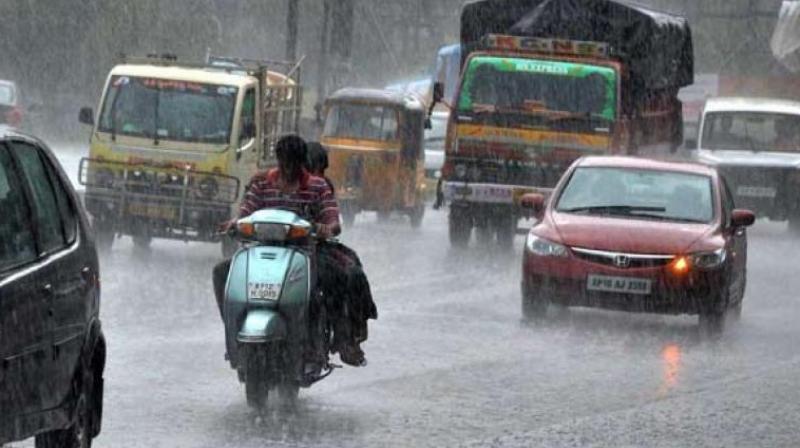Try getting artificial rain, says Madras high court
United Nations predicts 14 per cent of the world population would encounter water scarcity in 2025.

Chennai: Noting that for the last three years, rain has failed in Tamil Nadu and almost 24 districts are drought affected area and there are no perennial rivers in Tamil Nadu, the Madras high court has directed the Central and state governments to come out with an idea to find out whether there is possibility of bringing rain by artificial methods.
A division bench comprising Justices N.Kirubakaran and S.S.Sundar gave the directive while passing interim orders on a PIL, which among other things sought to take effective steps to store water on a war-footing in Tamil Nadu.
The bench said since the rainfall has become very less and groundwater level was getting depleted, water scarcity has become more acute and the people are left with no drinking water almost in every part of the state and in India. United Nations predicts 14 per cent of the world population would encounter water scarcity in 2025. Therefore, both the Central and the state governments have to use new methods, like cloud seeding to tackle water scarcity. Cloud seeding method was tried in Tamil Nadu in 1980. This court is not able to know the effectiveness of such exercise, the bench added.
The bench said Jeff Dilley, Director of Weather Modification at the Desert Research Institute in Renow claimed in 2016 that new technology and research have produced reliable result that make could seeding as a dependable and affordable water supply practice for many regions.
In 1998, the American Meteorologists Society held precipitation from supercold orographic clouds and the “clouds with development with mountains” has been seasonally increased by about 10 per cent. It was reported that China produced 55 billion tones of artificial rains a year. China spent $ 150 million at the single region artificial rain programme. US spends around $ 15 million a year and it produced 50 Billion tons of artificial rains a year, the bench added.
The bench said it was reported in the media that on March 22, 2019, Sri Lanka successfully conducted a test on artificial rains in the tea growing mountain region where hydro-electric power was generated in a bid to avoid possible power cuts. It was reported that an aircraft sprayed chemicals on clouds about 8,000 feet above one of the reservoirs that provide water to generate hydro-electric power resulting in 45 minutes rain. Both the Central and state governments have to come out with response as to why not they by modern artificial rain making methods including “cloud seeding” generate rain by technology. Why not the governments establish more desalination plants in various coastal districts to tackle the drinking water scarcity? And why not the governments tie up with corporate companies required to discharge corporate social responsibility as per the companies Act. The bench posted to April 10, further hearing of the case.

